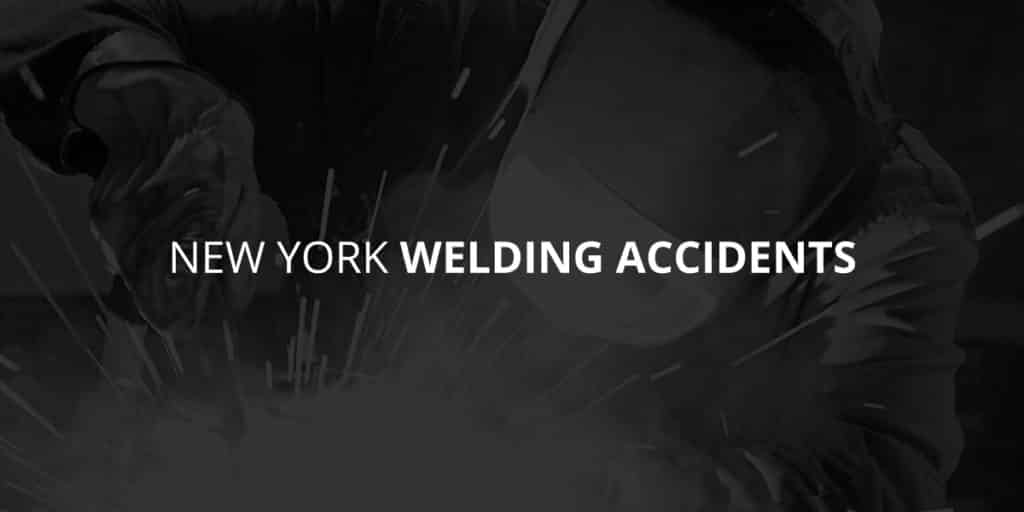Welding is by far one of the most dangerous jobs amongst construction and industrial-related occupations, and every year welders are injured in a variety of ways and deserve legal recourse. Welding injuries can occur to even the most experienced in the industry, and many times these types of injuries are serious and can leave an individual out of work for months at a time or be life-altering.
There’s no denying the financial strains on employees and their families when a construction worker is forced to miss work for extended periods of time, and there are many instances in which welding injuries are simply too expensive to be fully covered by an individual’s insurance.
On this page, we are going to go over the common types of welding accidents, how you can decipher your grounds for legal recourse, and the details of recovering damages within these types of personal injury cases. If you have any questions and would like to inform us about the details of your injury, always feel free to contact us for a free consultation so we can begin the initial steps towards your best course for legal action.
How Welding Accidents Happen
Welding injuries tend to happen in industrial or construction settings, but there are always extenuating circumstances that can lead to these types of accidents. Although New York law could inhibit an employee’s abilities to hold a co-worker or employer liable, you are always able to qualify for compensatory recovery from any third party who contributed to the causation of your injuries.
Some of the common types of welding accident injuries we come across include the following:
- Eye Injuries — Welders will many times be too exposed to bright light and welder’s flash, or arc eye, can cause serious eye surface and retina damage that can end up resulting in serious issues like cataracts and potential blindness.
- Skin Injuries — UV radiation from welding can seriously burn a worker’s skin, and when a welder experiences many years of UV radiation exposure it can lead to serious conditions like skin cancer. Fire and chemical burns are also common skin injuries associated with welding accidents, as well as burns from hot metal and slag.
- Fume Injuries — Welding fumes create microscopic particles that are capable of invading a worker’s lungs, and over long periods of time these fumes can lead to cancer, kidney damage, nervous system disorders, serious lung problems and issues with an individual’s joints and bones.
Protective equipment and industrial gloves can’t always prevent welding injuries, and no matter what type of welding is being conducted at your workplace it’s your manager’s responsibility to thoroughly explain the hazards associated with each welding job and make certain that OSHA’s safety protocols are consistently being abided by.
Symptoms of Arc Eye Radiation
Arc eye symptoms don’t always immediately appear, and many welders can remain unaware of the fact that they’re experiencing an arc eye burn until hours after the exposure. It’s always important for welders, and those working around welders, to take proper precautions.
Some of the most common symptoms or arc eye include:
- Mild or intense pain in the eyes
- Unusual sensitivity to light
- Lack of ability to look directly at light sources
- Irregular watering of eyes
- Eye reddening
- Feeling as if there is sand or some type of grit in eyes
Common Symptoms of Toxic Fume Exposure
Chemical byproducts are always a result of a welder applying intense heat to metal-based materials, and this consistently exposes welders to dangerous toxins. This type of exposure to toxic fumes over long periods of time can lead to serious illnesses like Parkinson’s disease and several types of cancer.
Some of the common symptoms of toxic fume exposure include:
- Impaired speech
- Psychological issues
- Tremors, or involuntary shaking
- Vulnerable coordination, balance, and essential motor skills
Determining the Validity for Legal Recourse
When someone endures any type of workplace injury, it typically depends on the negligence of a third party or entity in terms of validating the worker’s ability to file a civil lawsuit. Every legitimate welding accident lawsuit must include the following elements:
Duty of Care
The person who contributed to the causation of the welding injury needs to have had some sort of duty of care towards the victim, and this typically means they had a legal obligation to maintain a safe worksite and provide properly functioning equipment to the welder.
Breach of Duty
Every valid lawsuit must be able to prove that an individual or entity ended up breaching their duty of care to the accident victim, and this breaching of duty is legally defined as the necessary negligent behavior that leads up to the accident or injury. An example of this would be a contractor providing faulty equipment to a welder. Some of the more common types of negligence in welding injury cases include:
- Unsafe working conditions
- Insufficient toxic fume or burn protection
- Faulty or defective equipment
- Lack of adequate warnings about worksite dangers
- Lackluster job site supervision
Causation
This essentially means that the individual or entity’s breach of duty was the direct cause for the accident or injury the victim endured, and it’s important to know that a breach of duty isn’t solely enough to have a valid lawsuit. So playing off the same example, a contractor is only liable for a welder’s injuries if the faulty equipment they provided ended up being the direct cause for the welder’s injury or accident.
Damages
A welding accident victim also needs to be able to prove that they suffered economic or non-economic damages as a result of their injury in order to have a valid case. Some of the common types of recoverable damages in welding accidents include the following:
- Medical Care
- Treatment costs
- Ambulance rides
- Emergency medical care
- Hospital bills
- Physical therapy and other rehabilitation
- Ongoing care
- Future medical necessities
- Lost Wages
- Lost wages
- Reduced earning capacity
- Loss of future benefits
- Non-Economic Damages
- Pain and suffering
- Emotional anguish
- Reduced quality of life
- Mental distress
- Wrongful Death
Contact our New York Welding Accident Attorneys for a Free Consultation
Welding accident lawsuits typically occur when a general contractor tries to cut corners and ignore OSHA regulations in order to get projects done quickly.
Siler & Ingber, LLP will fight tirelessly for your rightful compensation after a welding accident, and we’ll be able to help you identify the liable parties for your injuries and take legal action against them.
It’s crucial for all welding accident victims to understand New York’s statute of limitations in terms of filing a personal injury claim on time, which is why it’s so crucial for victims to hire an experienced construction accident law firm to properly begin the necessary initial stages as soon as possible.
So if you or a loved one has suffered an injury as a result of a welding accident, then you very well may have legal recourse. Contact us today for a free case review so you can talk to one of our experts and begin taking the correct steps towards receiving your rightful compensation.

The Impact Of Marijuana Legalization
Would New York legalizing recreational marijuana increase road accidents? We took a look at the stats in our latest study.
View StudyThe Law Office of Siler & Ingber, LLP
Phone:
1.516.294.2666
Address:
301 Mineola Blvd. Mineola, NY 11501
Subscribe to our Newsletter
SubscribeThis is a unique website which will require a more modern browser to work!
Please upgrade today!

